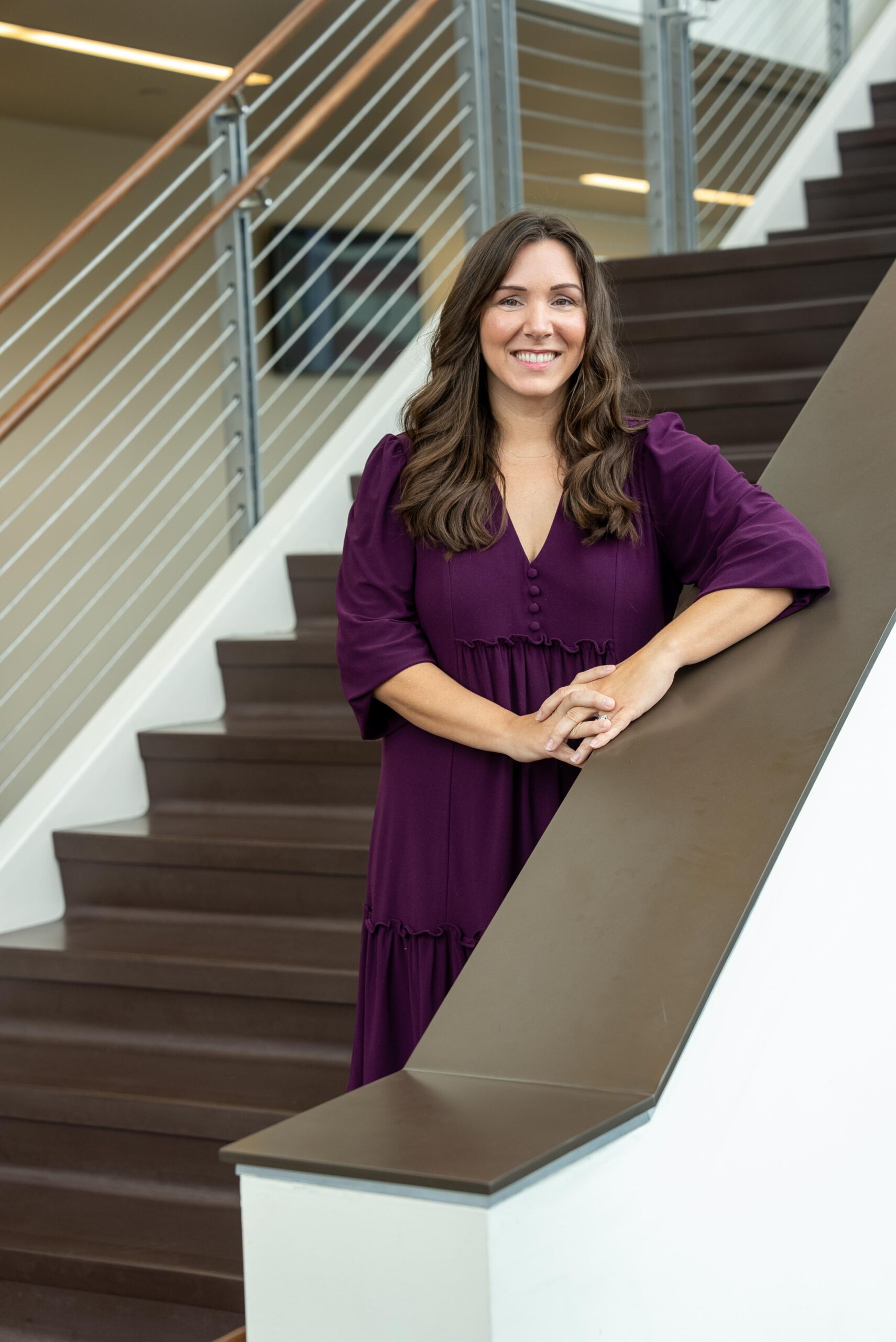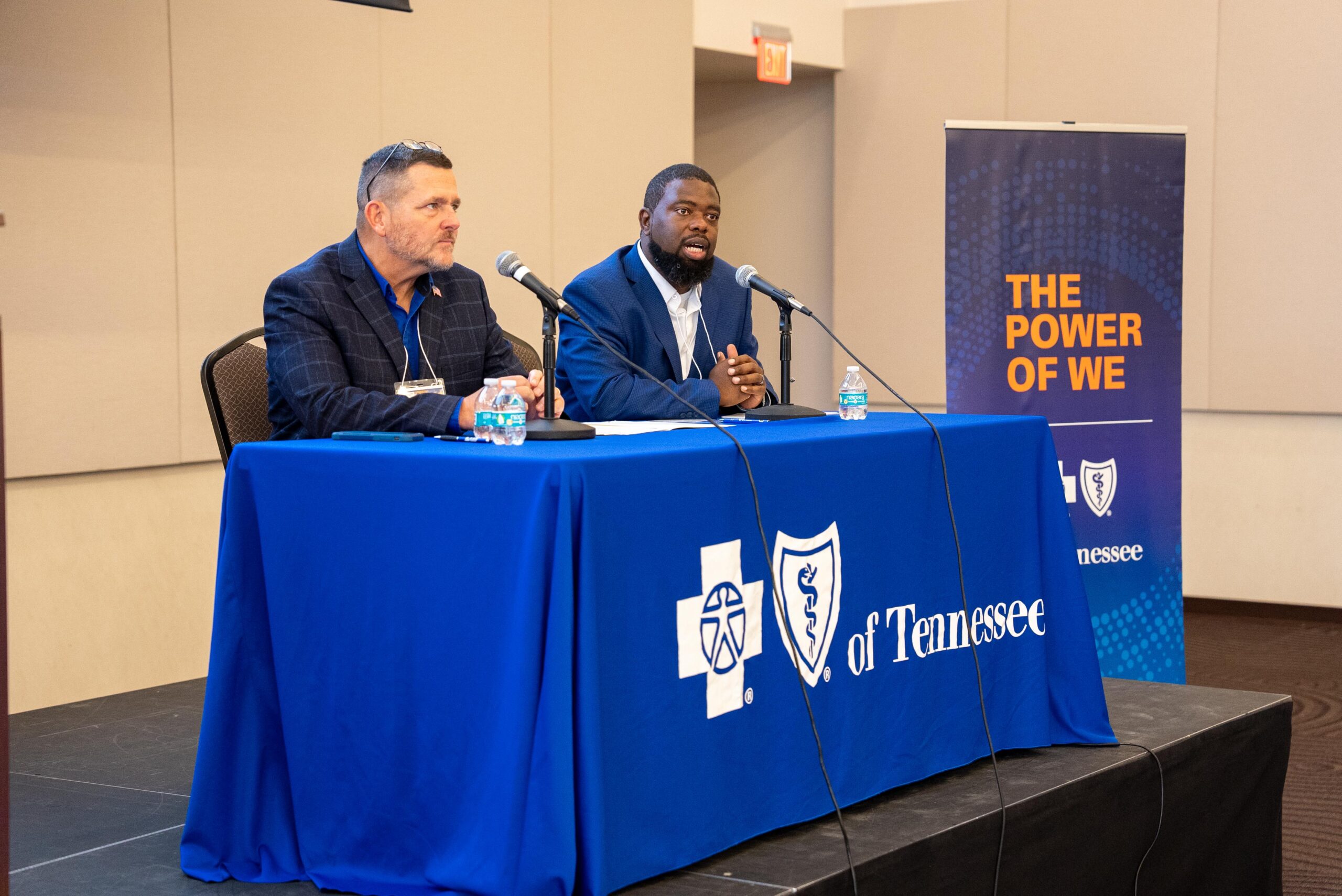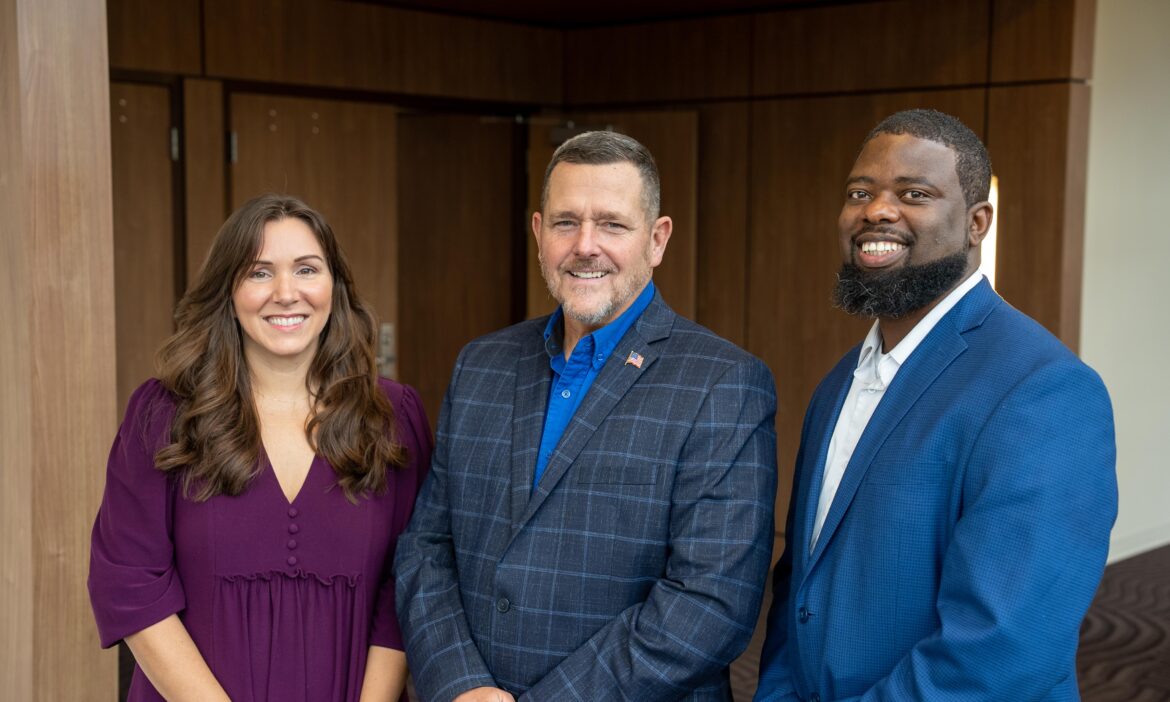At BlueCross, diversity, inclusion and cultural competency are woven into our mission of peace of mind through better health. Part of that is recognizing that our members and employees are diverse in their backgrounds and life experiences.
This is especially true of those who have served in the military — and we celebrate our veterans, their service, their commitment and their families all year through the efforts of our Veterans Employee Resource Group.
As part of this year’s Power of We Workforce Diversity Conference, BlueCross hosted a panel of experts who are committed to veterans, their families and their needs in the workplace.
Jenn Graham, founder and CEO of Inclusivv, served as moderator for the discussion. Through her work, Jenn brings people together for conversations that matter — as she did on Oct. 16, when she was joined by two veterans and advocates, Chris Rochelle and Rod Key.

Chris is assistant director and employer search agent at the Charlie and Hazel Daniels Veterans and Military Family Center at Middle Tennessee State University [MTSU]. Rod serves as a career advisor for military students at MTSU, helping them transition into their civilian careers.
“Today I want to start by creating space,” Jenn began. “We’re all here in the spirit of finding common ground. This conversation will explore the state of veterans and military families, how we honor them, recruit them, hire and retain them for the good of all.”
Below is an edited transcript of that conversation.
Jenn: Rod and Chris, thank you for joining us for this important conversation not often had. Can you describe your current roles in a nutshell?
Chris: First, thank you to the veterans in attendance for their service. Many of them could be sitting up here with us and giving a lot of the same information and experiences, but we all should know that not every veteran is the same. And that’s why the Charlie and Hazel Daniels Center was created.
Mr. Daniels wanted an all-inclusive center on a college university campus. When asked why, he said, “You have the resources for education, you have the resources for employment, and you have the resources to assist with anything in the community. You have all the community partners.”
“Most veterans, including those who have been injured, don’t want to sit at home. They’re looking for that next challenge.” — Chris Rochelle
Our mission at the Daniels Center to enroll, educate, employ and expand.
Rod: I was a business owner, a schoolteacher, and a veteran. I combined those gifts to work primarily with students — students who, like Chris said, are going back to school after their stay in the military or are still in the military. Most of them want an education and a career when they get out. We’re there to help that transition. And we see a variety of students. In fact, over the last two months, I’ve seen 75 students and the average age is 32 — so, non-traditional students.
“It’s sometimes hard for employers to know how to employ veterans, and it’s sometimes hard for veterans to know how to seek employment. We’re finding and applying best practices for all of that.” — Rod Key
Jenn: What are the top challenges facing veterans as they transition into the workforce?

Chris: MTSU is home to about 1,200 veterans each semester, and we see the difficulty of their transition. I can relate; my transition was very hard. What helps me in this role is equating their struggles with those of high school students, rather than traditional college students.
Many high school students have parents or a parent who does everything for them — they pay all their bills and provide everything from meals to housing to car insurance. If these students immediately enroll in the military after graduation, everything’s still covered for them: housing, meals, clothing, bills.
When active duty is complete, these men and women are starting all over again. It’s just like a student getting out of high school and asking, “What’s next? Do I go to college? Do I go to work? I can’t stay home, my parents are kicking me out.” The military is the same way: “Unfortunately, you’ve got to go.” That’s why many re-enlist.
“Not knowing what you want to do doesn’t stop you from being successful. It’s OK to be honest about that. It helps with the decision process. And even those who decide exactly what they want to do still face questions.” — Chris Rochelle
They ask, “How do I create a resume and cover letter? Do I want to go to school for this? Is additional testing required first?”
Rod: We can all agree that great traits for an employee include leadership, discipline, teamwork, problem-solving, adaptability, time management, attention to detail, communication, technical proficiency, training and mentoring, stress management, project management, risk assessment, cultural competence, resourcefulness, flexibility, resilience, and critical thinking.
These words resonate — and most veterans know well. They just don’t know how to tell you that they know them well. If they said, “I drove an amtrak [a military amphibious vehicle],” that may not mean anything to you. But if they said, “I was in charge of a fire team,” and then they used four or five of these words, you’d say, “Hey, I want some of that.”
“We have to speak the same language. We have to help veterans come from a place where they’re speaking the language they understand, and employers are listening to a language they’ve become familiar with.” — Rod Key
Jenn: When the culture of the military is very different than the culture of civilian life and the workplace, how do you help veterans and their families transition into these new cultures?
Chris: We remind them that everything has a learning curve and everyone’s starting over. That applies to everyone moving from one company to the next, whether they were in the military or not. So, we want to familiarize them with the concept of knowing what you want to do, figuring it out, and then learning everything they can about a company they’re interested in being part of it.
Rod: We also want companies to understand there’s a learning curve for them, as well. Even if they hire one veteran who proves to be the cream of the crop, another veteran may come in who seemingly has all the exact same traits, but they may not perform the same way. It sounds simple, but understanding that each veteran is different goes a long way.

Three questions to help you support employee veterans
At the close of the panel, Jenn invited attendees to gather in small groups and discuss these questions and then take them to their workplaces:
- What are three skills that come to mind when you think of military veterans and military spouses?
- In what ways have you seen organizations support veterans during this critical transition into the workforce?
- How might employers create workplace cultures that support veterans and their families? And what does that support look like for you and your organization?

